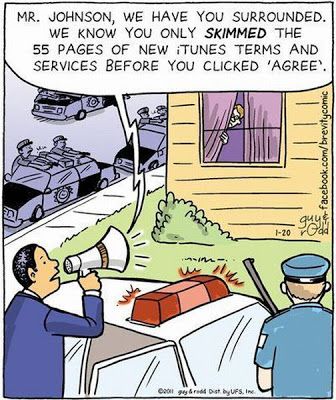5 Digital Marketing Mistakes – And How You Can Fix Them

These days it seems like everyone is a digital marketer or versed in digital marketing. The evolution of today’s business marketplace and technology has allowed solopreneurs and entrepreneurs to position themselves as experts. In the last 3-5 years alone the business marketplace has evolved more than it has in the last 50. I attribute the majority of growth mainly to technology, search, and social media.
As we embark upon the end of Q1 in 2016 you tend to halt for a minute and begin to wonder about your current digital marketing endeavors. If by now you are not implementing a portion of your digital marketing plan than you might be running behind. The end of Q4 in prior year signals the end of preparation for your 2016 digital marketing plan. For certain brands this can be a matter of time constraint thought and therefore unable to prepare accordingly.
Do you feel that your digital marketing endeavors are not paying off? The following 5 areas cover some of the most common mistakes that brands are making with digital marketing.
#5 – Forgetting About A Game Plan
Strategy, implementation, and tactical execution are huge keys to success in digital marketing. In essence the determining factors behind competition even. This is particularly true in 2016. A year that is noted to be the most monumental yet for digital marketing. Penetrating in the marketplace or even beating your competition will not come easy. You will need a strategic plan of action to help you propel in today’s highly competitive and saturated business marketplace.
Consider the following areas when constructing your digital marketing plan. Keep in mind that these are also top level recommendations rather than concrete specifications.
- Goals & Objectives
- Target audience
- Resources
- Channels (Search, Social, etc.)
- Demographics
- Tactical approach
- Content and Storytelling
- Engagement
- Implementation
There are two specific things I would strongly recommend that you avoid at all costs. These are critical to the success of your digital marketing strategies.
- Throw money at the problem and hope it works itself out (unless you want to continuously throw money at a problem)
- Avoid the problem altogether by not taking any action against it (be proactive, not reactive in your digital marketing endeavors)
#4 – Not Embracing Social Media
By year 2018 the projected number of social media users will reach 2.5 billion. That is nearly half the global population lurking around social platforms like Facebook, Twitter, Snapchat, LinkedIN, Pinterest, Anchor, or any other I forgot to mention. If social media does not quite resonate with you or your brand quite yet then perhaps it’s time to look at it from a different lens. Think of social media as an amplified word of mouth channel. This is where your friends, colleagues, current, and potential customers are lurking around. A good portion of consumers will turn to social media for validation. Especially when shopping for a product or service online. It is a channel certainly not to be ignored.
If you’re new to the social media space or still struggling to find your groove then perhaps some of these tips can help you get on the right path.
- Evaluate how much time you can realistically devote to social media endeavors. To be on the safe side account for at least one hour per day.
- What resources will you need to implement and execute on your social media tactics?
- Who is your target audience? Male, female, or both? What age group are you targeting?
- Have you identified your tone of voice?
- What tools will you use to help you implement, execute, monitor, and manage social media activity?
Please keep in mind that the above are merely common suggestions for development of a holistic social media strategy. When it all comes down to it though I truly hope that you avoid the following:
- Completely ignore social media because you don’t believe in it.
- Hire an intern to handle all of your social media endeavors.
- Avoid a social media strategy due to budgetary constraints.
#3 – Avoiding Power of Search & Search Trends
 Organic search is a highly trusted channel by majority of online users. It is also the #1 source for research, comparison shopping, or even intent to purchase. As of the end of 2014 global organic traffic is dominated by Google, Bing, and Yahoo search engines. Google holds 93% of all global organic search results being the #1 search engine where desktop, mobile, and tablet users tend to gravitate towards. Search is about visibility, awareness, generating interest, and capturing your customers attention. If you are not keeping up with search and search trends than chances are your brand might be facing repercussions. For instance, did you know that search is commonly used for reputation management purposes? Others might be referring to your brand in a negative way by publishing content that will ultimately impact brand perception.
Organic search is a highly trusted channel by majority of online users. It is also the #1 source for research, comparison shopping, or even intent to purchase. As of the end of 2014 global organic traffic is dominated by Google, Bing, and Yahoo search engines. Google holds 93% of all global organic search results being the #1 search engine where desktop, mobile, and tablet users tend to gravitate towards. Search is about visibility, awareness, generating interest, and capturing your customers attention. If you are not keeping up with search and search trends than chances are your brand might be facing repercussions. For instance, did you know that search is commonly used for reputation management purposes? Others might be referring to your brand in a negative way by publishing content that will ultimately impact brand perception.
Search isn’t just about keyword stuffing, building links, or rankings anymore. It’s about establishment of your brand’s perception in the marketplace. Rather a more blended approach comprised of content, keyword strategy, social companionship, mobile visibility, and an overall cohesive brand experience. Close monitoring of emerging search trends and adhering towards them can boost inbound traffic potential. More traffic equals new business opportunities. Last but not least in most industries Organic Search alone accounts for a substantial percentage of inbound traffic to a website domain. It would be a suicide mission not to embrace Search as a viable marketing channel.
#2 – Avoiding Content Marketing
Even at the height of content marketing and storytelling a vast majority of brands are still skeptical about this method of digital advertising. Content marketing isn’t anything new though anymore. In the reality of things content has been used as means of marketing even dating back to the 1800. The difference in today’s modern day in age is the fact that technology, reach, and accessibility allows you to amplify the potential of your content. Many brands are failing at content marketing these days. That is because they are still employing outdated practices in implementation and execution of their content marketing endeavors. In the beginning content marketing would yield success if it came in quantitative form. The more content you published, the higher the chances for generating traffic potential.
Then the tables turned. Content marketing quickly became saturated and also highly competitive. More brands like Mashable, Huffington Post, Business Insider, Inc, and others jumped on the bandwagon. In doing so this created high saturation in the marketplace and also allowed each of these content publishers to establish themselves as go-to sources. Although content marketing is NOT DEAD. Definitely far from it for probably many years to come. The new way of content marketing now entails in the substance of your context. It has to be valuable, authoritative, and well crafted in order to resonate with a specific target audience.
One of the biggest advantage points behind content marketing includes the added value proposition. Content is meant to provide some sort of value and insight to an audience. This is something that majority of brands are failing at these days. Focus your brand on crafting meaningful content that can provide value to your target audience. The added value proposition entices consumers and ultimately impacts their purchasing behavior.
#1 – Technology Misuse
 Technology helps us do things. It contributes to the efficiency aspect of accomplishment. Although one of the major issues these days pertain to the misuse of technology within the digital umbrella. A smartphone can be used for a variety of different reasons. For instance, to Snapchat your target audience. Or to send a tweet. Maybe answer a piece of e-mail. Get on Facebook to send a status update on your business page. Perhaps firing off a wave on Anchor if that’s your thing. Either way the point here is that technology is intended to be used as an assistant to our digital endeavors.
Technology helps us do things. It contributes to the efficiency aspect of accomplishment. Although one of the major issues these days pertain to the misuse of technology within the digital umbrella. A smartphone can be used for a variety of different reasons. For instance, to Snapchat your target audience. Or to send a tweet. Maybe answer a piece of e-mail. Get on Facebook to send a status update on your business page. Perhaps firing off a wave on Anchor if that’s your thing. Either way the point here is that technology is intended to be used as an assistant to our digital endeavors.
Now the below outlined is merely an example of a piece of technology we use on daily basis. If you still do not think that a smartphone is classified as a piece of technology than sadly to say you might be living under the rock. The brands that happen to misuse technology whether it’s intentionally or unintentionally, will fail majorly. Adapt or suffer miserably.
BONUS – Becoming Obsolete
Nearly 40% of current companies will be non-existent in the next 10 years according to a recently article as outlined by soon-to-be retiring CEO of Cisco. Majority of companies that are around today are still marketing like it’s 2011 or beyond. Not being able to embrace current market trends and patterns will quickly put you out of business. Failing to experiment with various digital marketing tactics will put you out of business. The main issue with digital marketing is that many brands attempt to adapt digital but fail to execute on it. A few years ago I happened to be intertwined within a few startups. Granted each have their own set of struggles and that is understandable. However it is also precisely a reason to innovate by embracing new digital tactics and technologies to help them evolve in the marketplace.
The struggle is real and many brands are facing the repercussions of the digital marketplace. Does any remember Circuit City or even Radio Shack that went under in a real short period of time? How about Blockbuster Video? Let’s not mention the comical statement they made of Netflix which ended up revolutionizing the movie industry.
Did you enjoy this article? I’d love to hear your thoughts and comments below.
Image attribution: Copyright: ‘http://www.123rf.com/profile_ndul‘ / 123RF Stock Photo
Origin unknown. Found here: http://www.jasonjsmith.com/organic-search.html
http://www.gocomics.com/brevity
Latest posts by Ivan Temelkov (see all)
- How Gary Vaynerchuk Helped Me Build & Grow a Business - October 19, 2016
- Getting Your Content Noticed By The Sophisticated Consumer - October 12, 2016
- Harnessing 404 Pages & Why You Should Have One - October 5, 2016

